Field Trip Season
/I found a new Season. Field Trip Season. I've had 4 field trips here in the last couple of weeks. I don't get very good photos during field trips because I'm the one who is leading the field trip, but I'll use a few. Today I'll share yesterday's field trip because I got to be a participant (as opposed to leader) of part of it.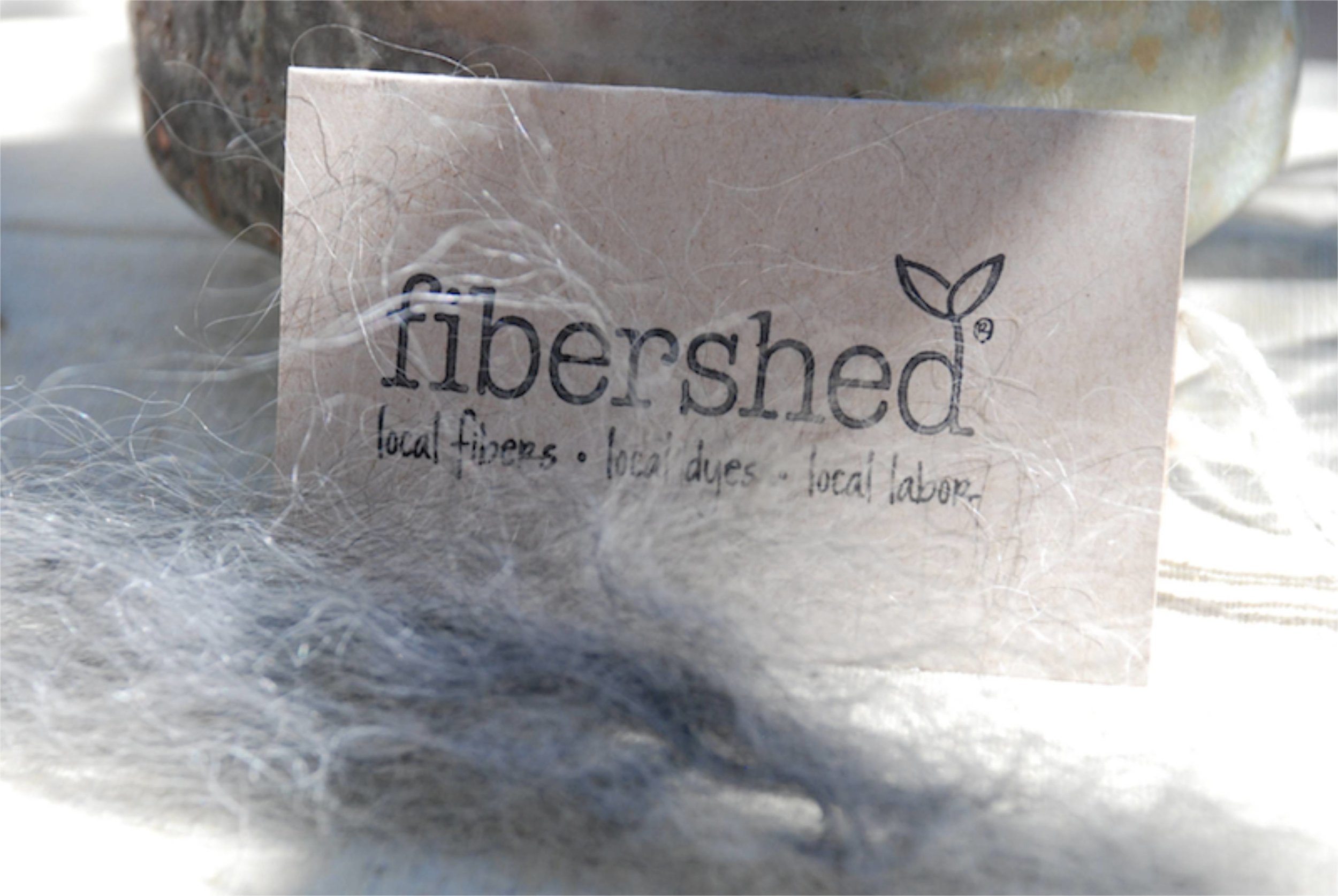 Fibershed sponsored a field trip for representatives of Smartwool, Northface, Lucy (and maybe others) to learn about our end of textile production. Many (most?) people who purchase and use fabric, individually or commercially, don't necessarily have a sense of where it comes from. The goal of this trip was to expand the awareness of fiber production--the animals, the farmers, the soil and plants--and the importance of supporting sustainable local farms, and the idea that there is plenty of wool grown in N. CA but not the infrastructure to turn it into cloth. That is a primary goal of Fibershed--to set in motion the creation of that infrastructure and to create thriving businesses that support farmers, designers, fiber processers, and consumers. Whew! Pretty lofty goals? I am always amazed at what Rebecca (creator of Fibershed) has coming up next. I really hope that you'll spend some time on the Fibershed website because I think it's one of the most important non-profit groups you'll find.
On to the field trip. I expected 5-6 people. There was a busload! First stop for us was the pasture.
Fibershed sponsored a field trip for representatives of Smartwool, Northface, Lucy (and maybe others) to learn about our end of textile production. Many (most?) people who purchase and use fabric, individually or commercially, don't necessarily have a sense of where it comes from. The goal of this trip was to expand the awareness of fiber production--the animals, the farmers, the soil and plants--and the importance of supporting sustainable local farms, and the idea that there is plenty of wool grown in N. CA but not the infrastructure to turn it into cloth. That is a primary goal of Fibershed--to set in motion the creation of that infrastructure and to create thriving businesses that support farmers, designers, fiber processers, and consumers. Whew! Pretty lofty goals? I am always amazed at what Rebecca (creator of Fibershed) has coming up next. I really hope that you'll spend some time on the Fibershed website because I think it's one of the most important non-profit groups you'll find.
On to the field trip. I expected 5-6 people. There was a busload! First stop for us was the pasture.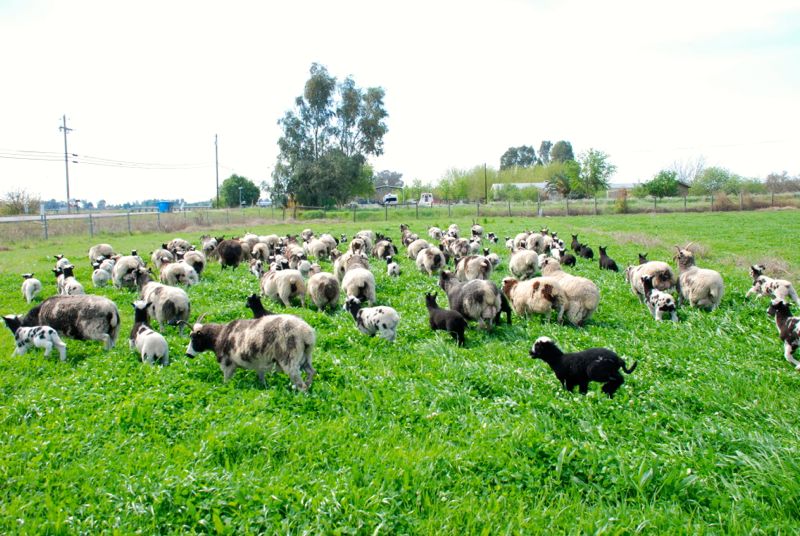 The sheep performed admirably. I had waited to move the fence for the day's grazing until the field trip was here. The sheep rushed to the fresh pasture just like they always do.
The sheep performed admirably. I had waited to move the fence for the day's grazing until the field trip was here. The sheep rushed to the fresh pasture just like they always do.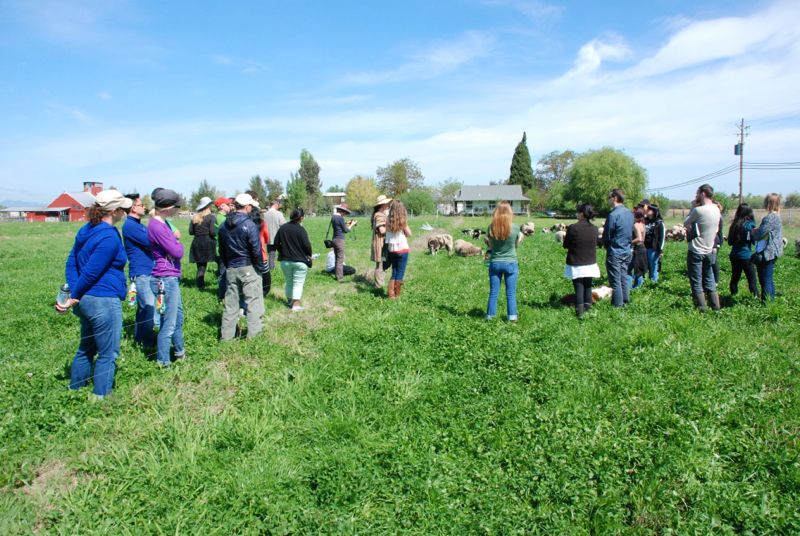 This is the group in the pasture. We spent a lot of time discussing pasture management, irrigation, choice of breed, wool types, etc.
This is the group in the pasture. We spent a lot of time discussing pasture management, irrigation, choice of breed, wool types, etc.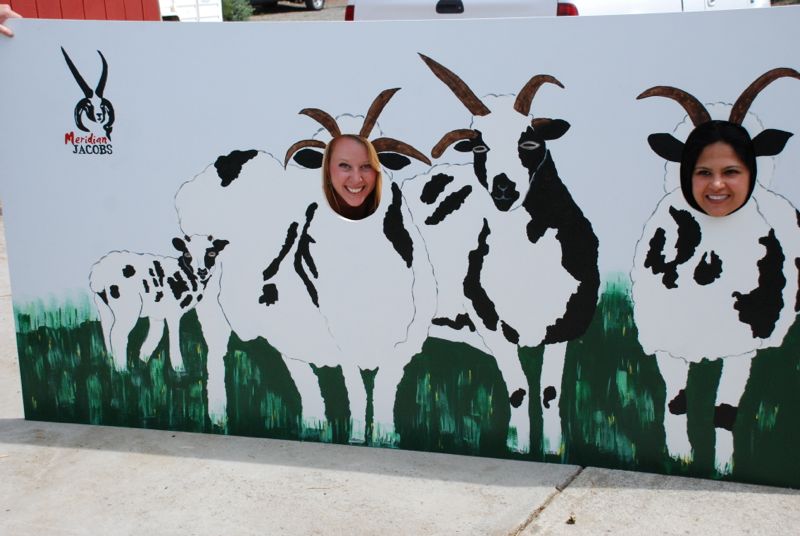 Friend, Dona, brought this board over, getting ready for Meet the Sheep on Saturday. Some of the braver visitors tried it out.
Friend, Dona, brought this board over, getting ready for Meet the Sheep on Saturday. Some of the braver visitors tried it out.
The second part of the tour was a trip to Mary Pettis-Sarley's ranch in the hills west of Napa. 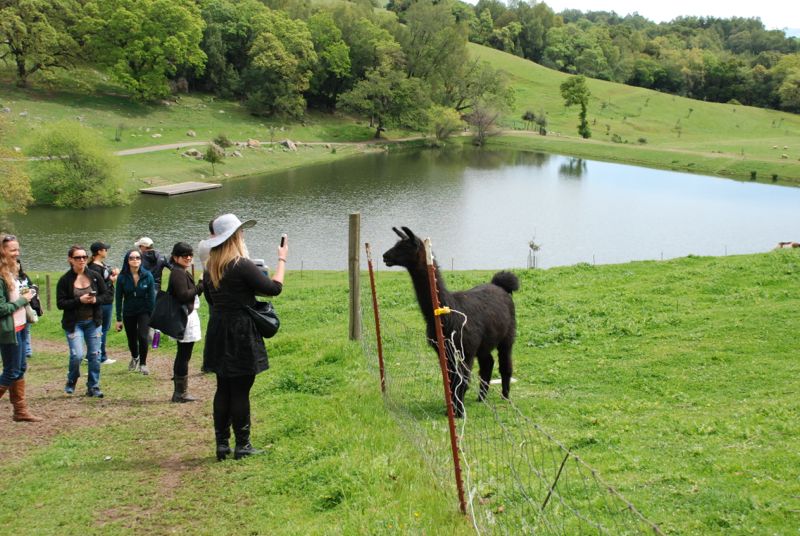 Mary has a variety of sheep, cattle, and alpacas who live in a beautiful setting.
Mary has a variety of sheep, cattle, and alpacas who live in a beautiful setting.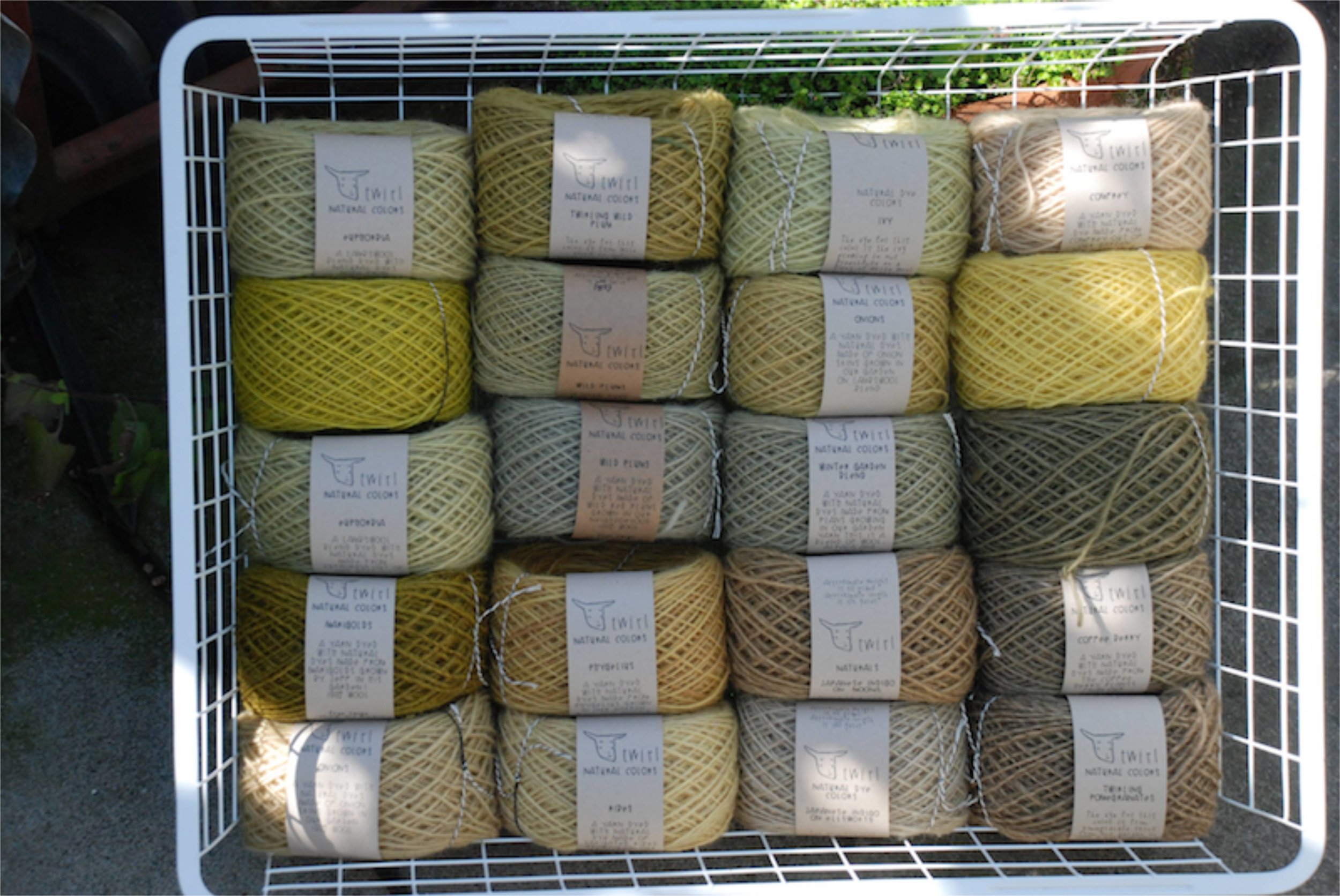 She creates Twirl yarn using unique blends of the fibers she grows.
She creates Twirl yarn using unique blends of the fibers she grows.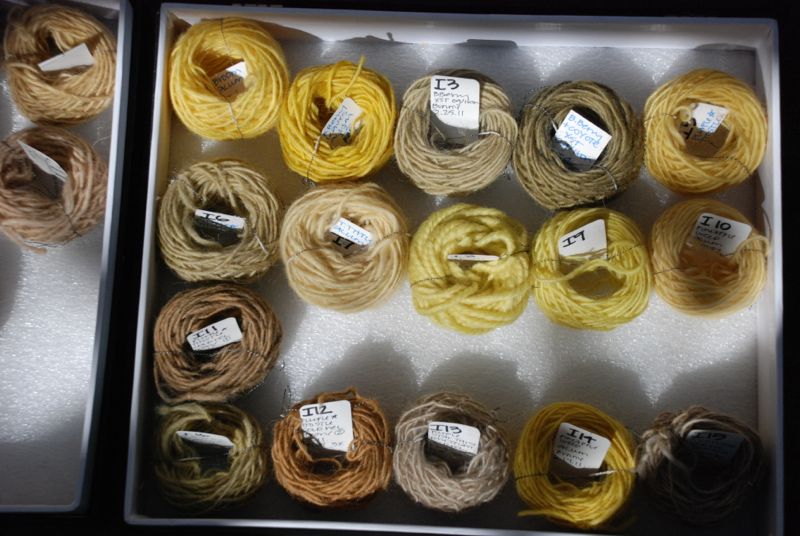 The yarns are all natural colored or dyed with natural dyes from plants that grow on the ranch. The "I" in these labels indicates that the dyeplants are invasive species.
The yarns are all natural colored or dyed with natural dyes from plants that grow on the ranch. The "I" in these labels indicates that the dyeplants are invasive species.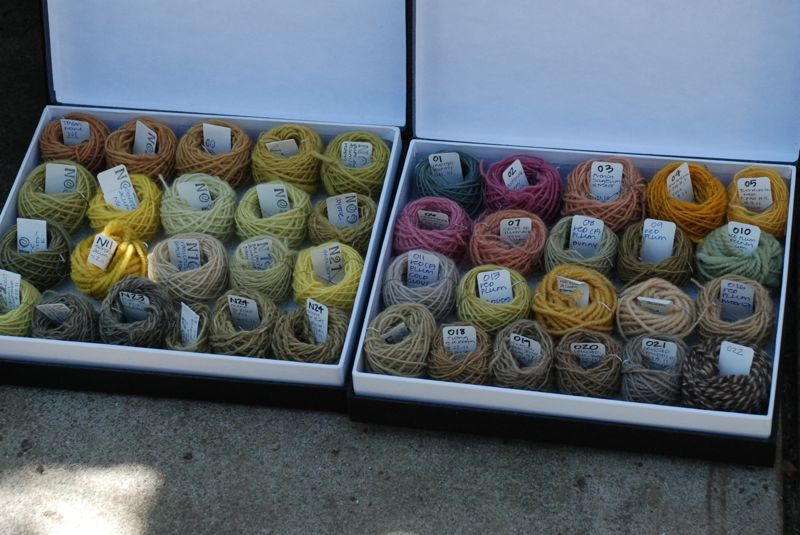
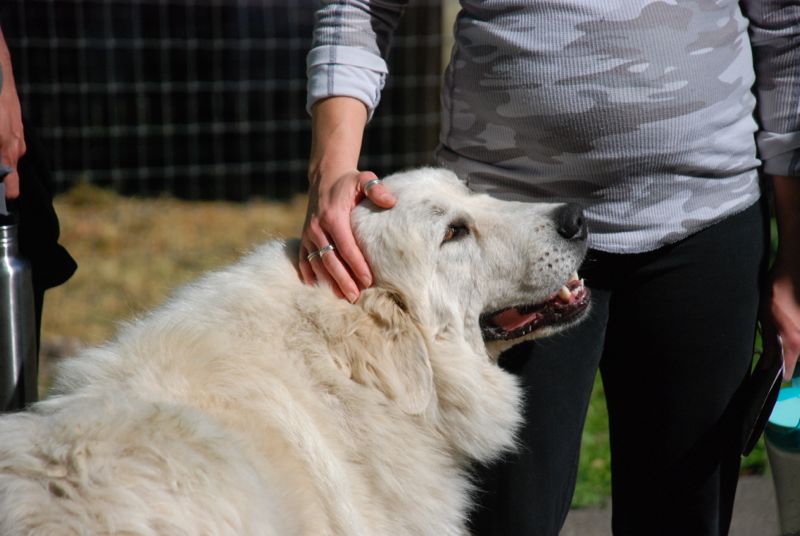 A major challenge of raising livestock in the hills is the predator problem. Mary has 17 dogs, most of whom are various breeds of livestock guardian dogs (LGD). They can be intimidating when you drive onto the property, but aren't so scary once they know you're on the approved list (or maybe that you're not a 4-legged hungry visitor).
A major challenge of raising livestock in the hills is the predator problem. Mary has 17 dogs, most of whom are various breeds of livestock guardian dogs (LGD). They can be intimidating when you drive onto the property, but aren't so scary once they know you're on the approved list (or maybe that you're not a 4-legged hungry visitor).
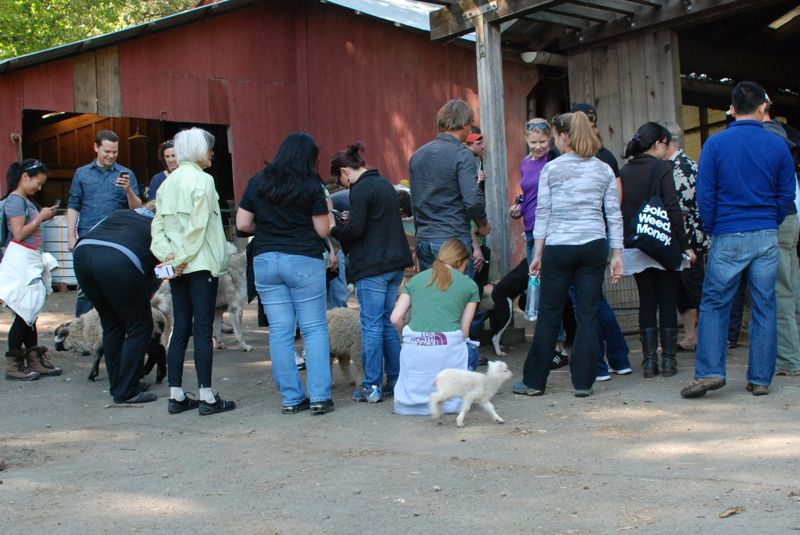 Mary let out the bottle babies...
Mary let out the bottle babies...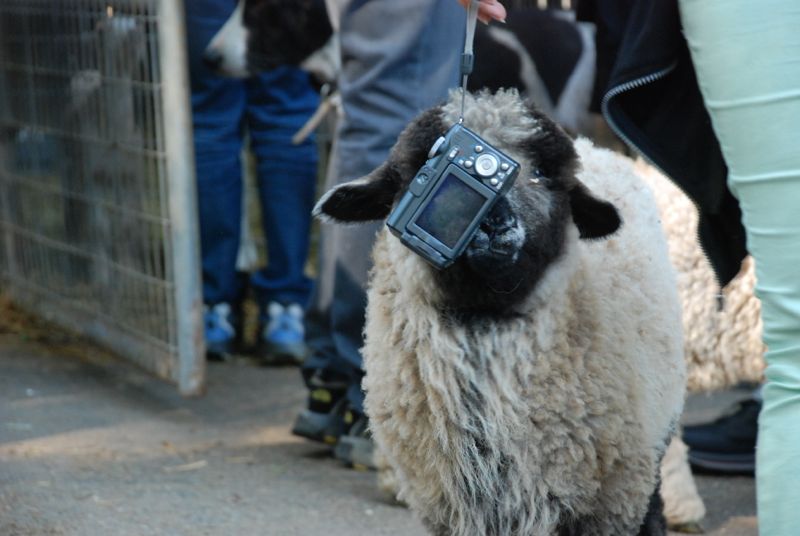 ...and I think her part of the field trip won the Cuteness Factor award.
...and I think her part of the field trip won the Cuteness Factor award.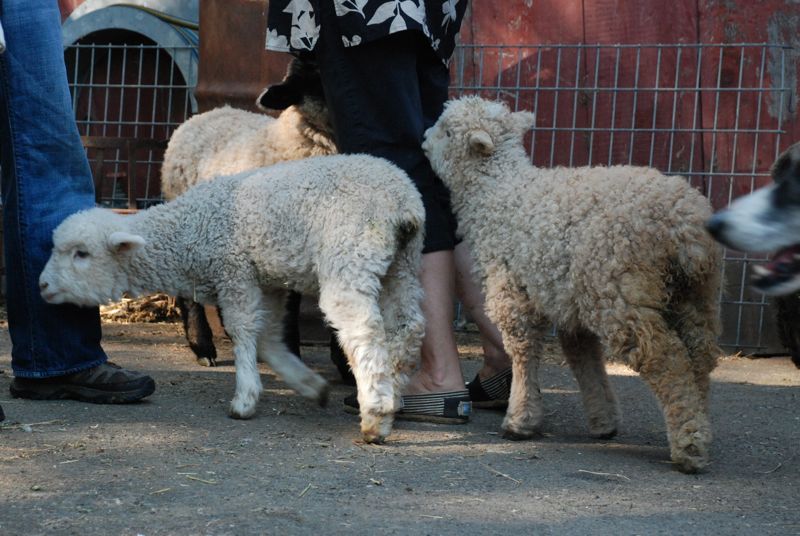
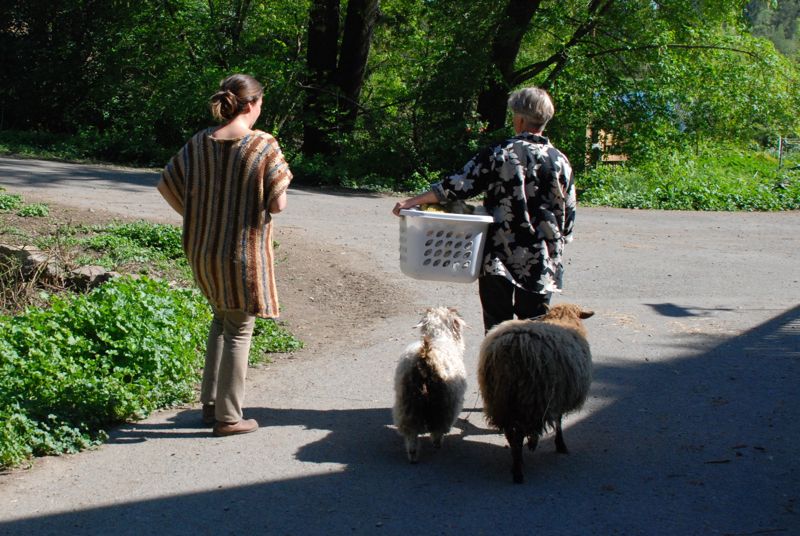 We were accompanied by two of the pets on the way to Mary's wool washing station.
We were accompanied by two of the pets on the way to Mary's wool washing station.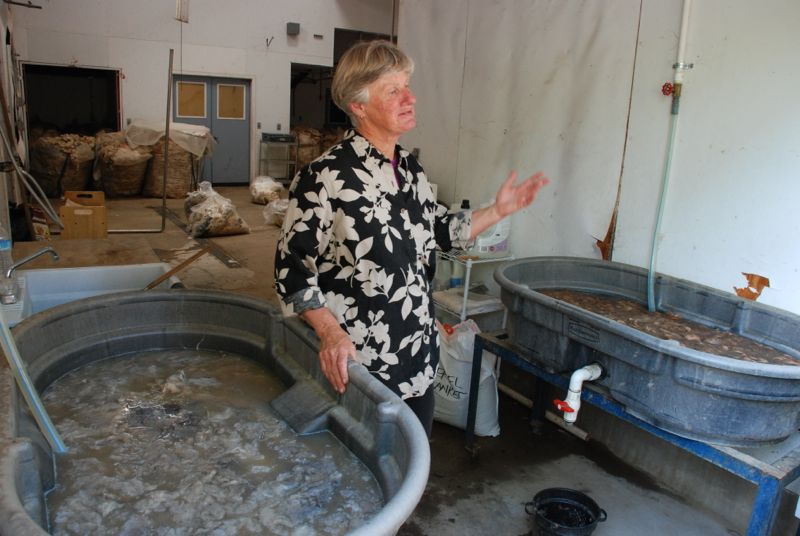 Now I'm jealous, not only of the property, but of this. Maybe I'd wash more of my own fleeces if I could figure out a set-up like this.
Now I'm jealous, not only of the property, but of this. Maybe I'd wash more of my own fleeces if I could figure out a set-up like this.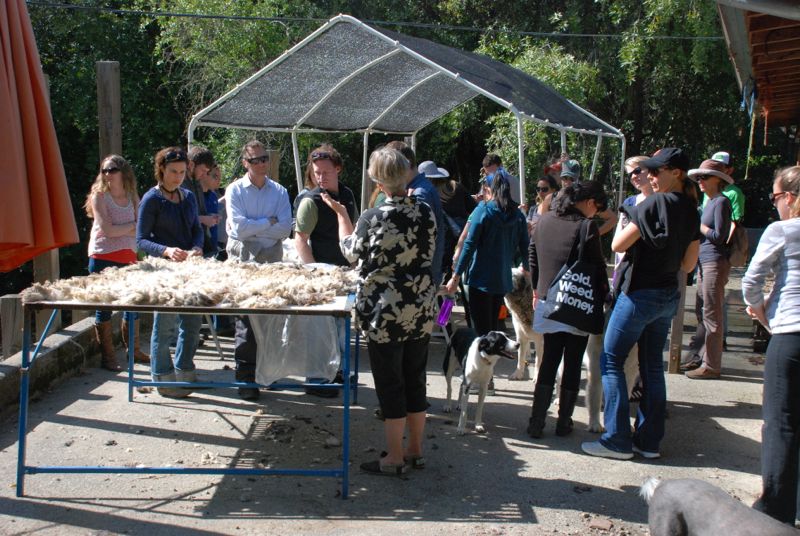 Here is where the fleeces are dried. Mary had several fleeces spread out so that the visitors could handle them and feel the characteristics that we'd been talking about all day.
Here is where the fleeces are dried. Mary had several fleeces spread out so that the visitors could handle them and feel the characteristics that we'd been talking about all day.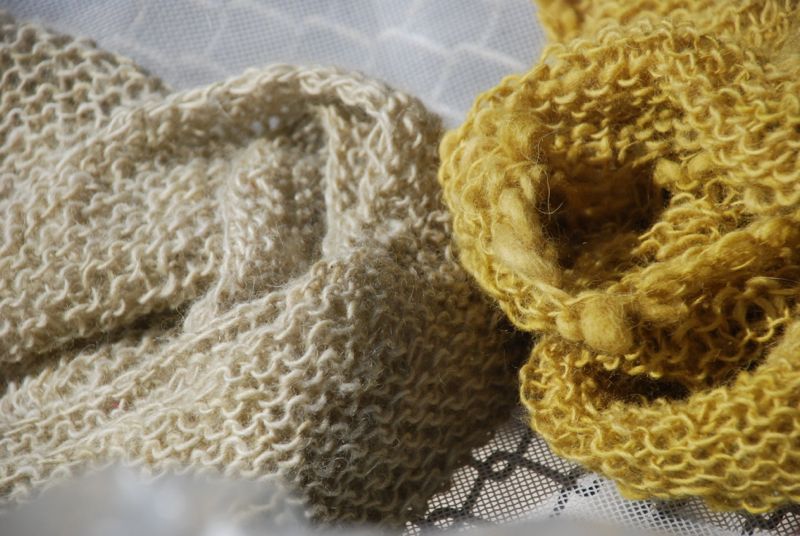 A couple of scarves knit with Mary's yarn.
A couple of scarves knit with Mary's yarn.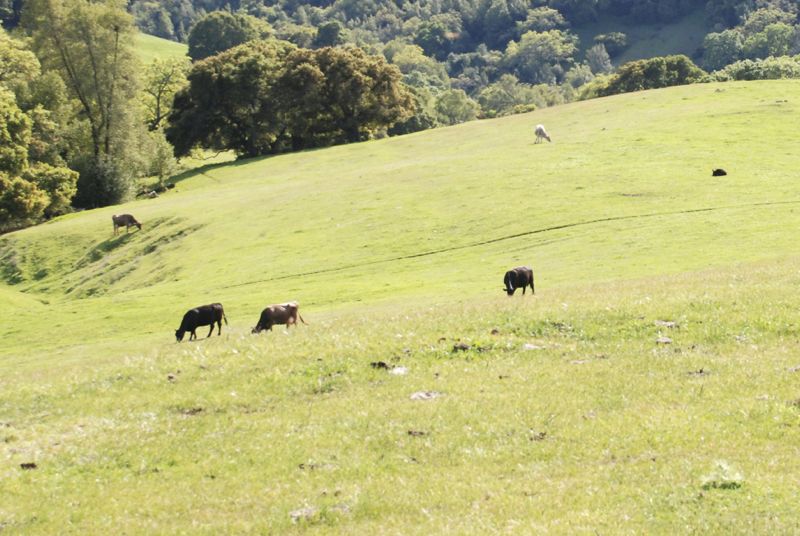 As I drove way I saw some of Mary's cows. As it happens, these cows are the daughters and granddaughters of Jennie, a Brown Swiss cow that Mary got from us when we left our dairy life in 1998. Talk about happy CA cows. These truly have a happy life.
As I drove way I saw some of Mary's cows. As it happens, these cows are the daughters and granddaughters of Jennie, a Brown Swiss cow that Mary got from us when we left our dairy life in 1998. Talk about happy CA cows. These truly have a happy life. Look at their view of the Napa Valley if they choose to look up from all that grass. (Alpacas in this photo--they were right next to the cows.)
Look at their view of the Napa Valley if they choose to look up from all that grass. (Alpacas in this photo--they were right next to the cows.)

